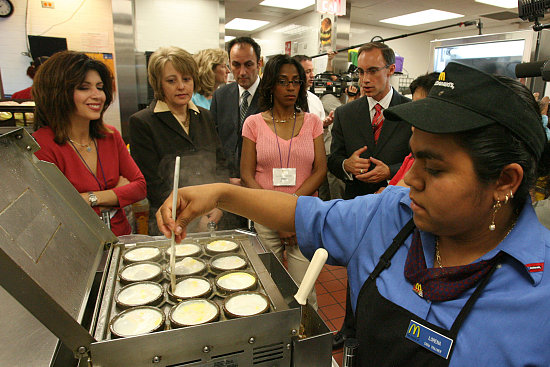
I haz none.
Are faces processed differently than other objects?
One of the indications that face processing is special -- employs holistic or configurational processing that is more detailed and sophisticated than in ordinary object recognition -- is that people process, recognize and remember upright faces more accurately than inverted faces. This is called the upright advantage.
According to norms provided on the Cambridge Face Perception Task, most people process upright roughly twice as well as inverted faces.
On this test, my ability to process inverted faces was in the normal range -- but I was no better at upright than inverted. I showed no upright advantage.
My husband H took the same test. His inverted score was the same as mine (indeed, I was a few points better than him on inverted faces). But his upright face score was far above normal, in the superior range. Looking at our scores made us realize we were really different face processors. He had something I didn't have.
H and I then together took a couple tests that are available at the website of the Prosopagnosia Research Center at Harvard University. For a basic test of memory of novel faces, H got 100% correct, and I got 52% correct.
For this interesting and fun test of famous faces, H got 100% correct, and I got 72% correct.
After an anonymous poster to this blog told me about the yahoo discussion group, I found Bill Choisser's remarkable website. I really resonated to many of his experiences, such as this one:
I once had a job that involved going to buildings and getting their engineers to show me around. Inevitably they would all wear identical clothes and never have beards or long hair. My "tour guide" would take me to a distant part of the building and then tell me to come get him if I needed him again. When I'd go down to the office, there would be half a dozen guys there, all who looked just like the guy I was looking for. I couldn't just ask for the guy by name because if he was there he would get very upset that I had forgotten him completely in thirty minutes' time.
====
For me, when I'd get back to the place where'd there be half a dozen guys etc., I'd kind of start scanning them, waiting for someone to light up in recognition of me, or maybe I'd get lucky and recognize him based on my my kit of various recognition methods,and somehow hope it'd just work out. In recent years I've tried to anticipate this situation by memorizing the guide's face/outfit in some way before we separated.
I've frequently been stunned that fastfood workers can pick me out of a crowd of people when handing over my sandwich. (Any readers impressed by this?)

Next: I am invited to the Jamaica Plain VA Hospital for more tests...




No comments:
Post a Comment